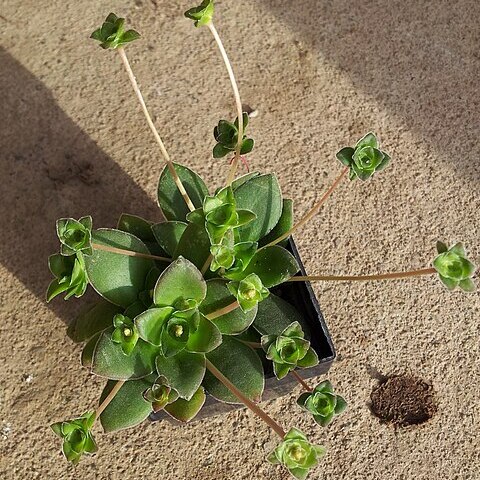Perennial herb, succulent, little branched, few rosettes with runners, ± 0.25 m high when flowering, leaf pairs spirally arranged, old ones remaining on stem. Leaves elliptic to oblanceolate, 15-80 x 5-20 mm, acute, glabrous with row of marginal cilia, dorsiventrally flattened, green to brownish green, tinged red along margins and apex. Inflorescence a terminal, elongated thyrse, many dichasia, stalked flowers; peduncle 0.05-0.20 m long. Calyx glabrous, fleshy, green to red, marginal cilia. Corolla tubular, fused 0.2-0.5 mm, white tinged pink; lobes lanceolate to linear-elliptic, 2-3 mm long, acute, slightly hooded, spreading, later recurved. Flowering time June-Nov.
Perennial, consisting of few-many leaf-rosettes, up to 0.25 m tall when flowering, often forming clumps from runners. Leaves in spirally-arranged pairs, sessile, oblanceolate, dorsiventrally flattened, 8-15 x 4-13 mm, glabrous, with marginal cilia. Flowers nearly sessile, in several, ± stalked clusters, in an elongated inflorescence on a glabrous peduncle 0.05-0.2 m long, tubular, petals 2-5 mm long, fused in lower 0.5 mm, white to pale yellow.
Perennial to 25 cm. Leaves opposite, oblanceolate to elliptic, margins with a dense row of spreading cilia. Flowers in elongate, sometimes spike-like, pedunculate clusters, tubular, white to yellow tinged pink to brown.

